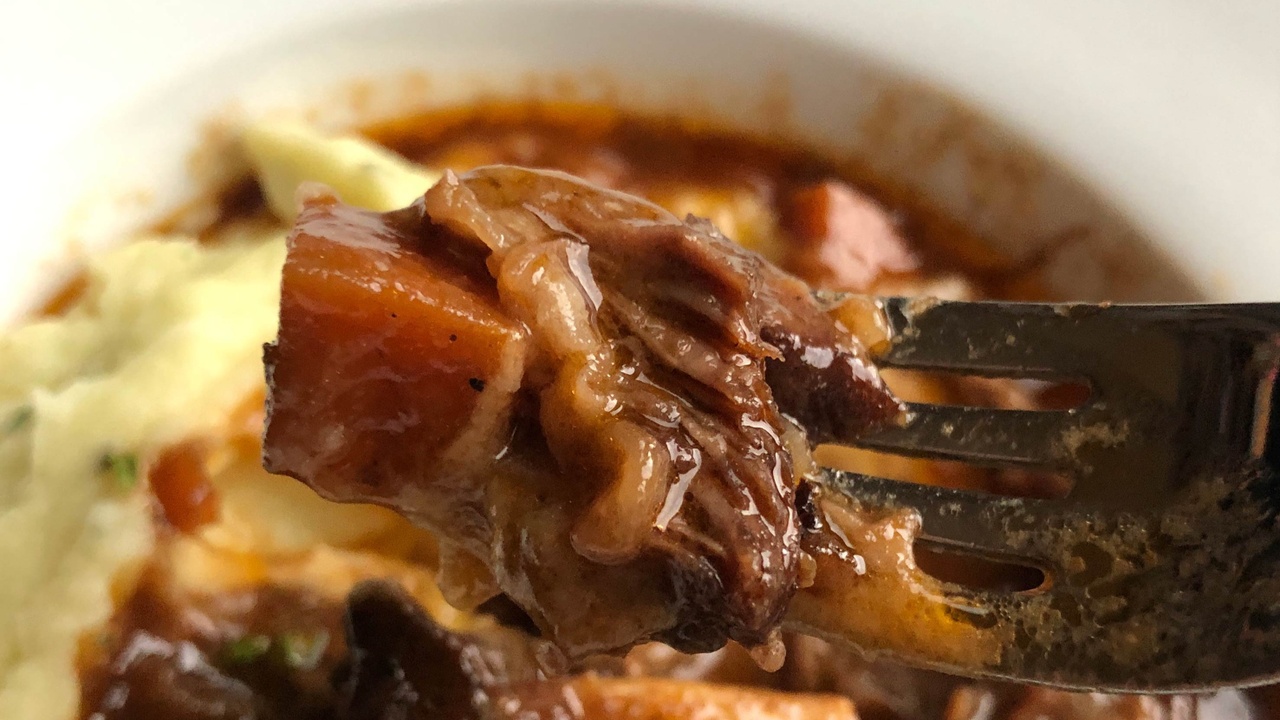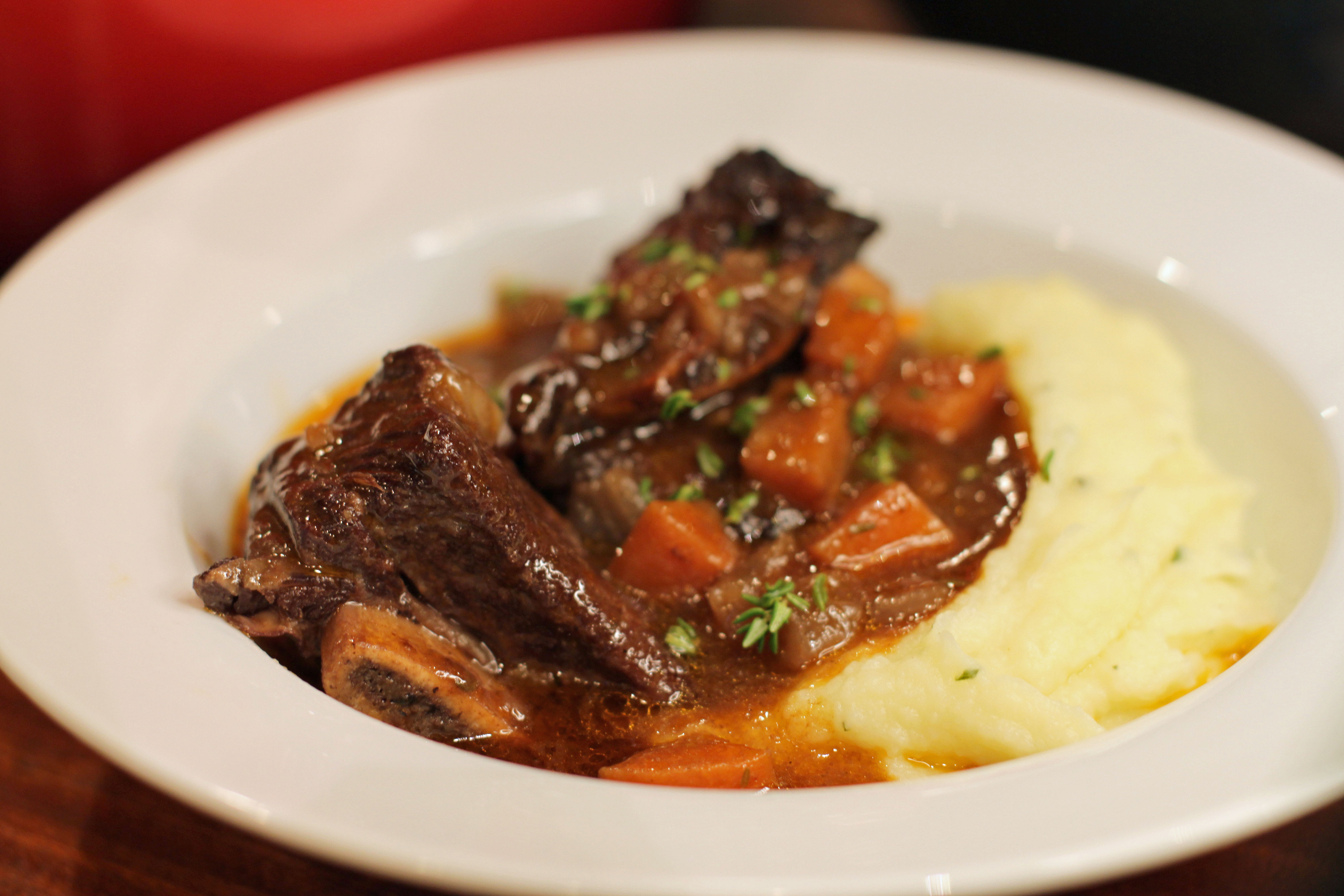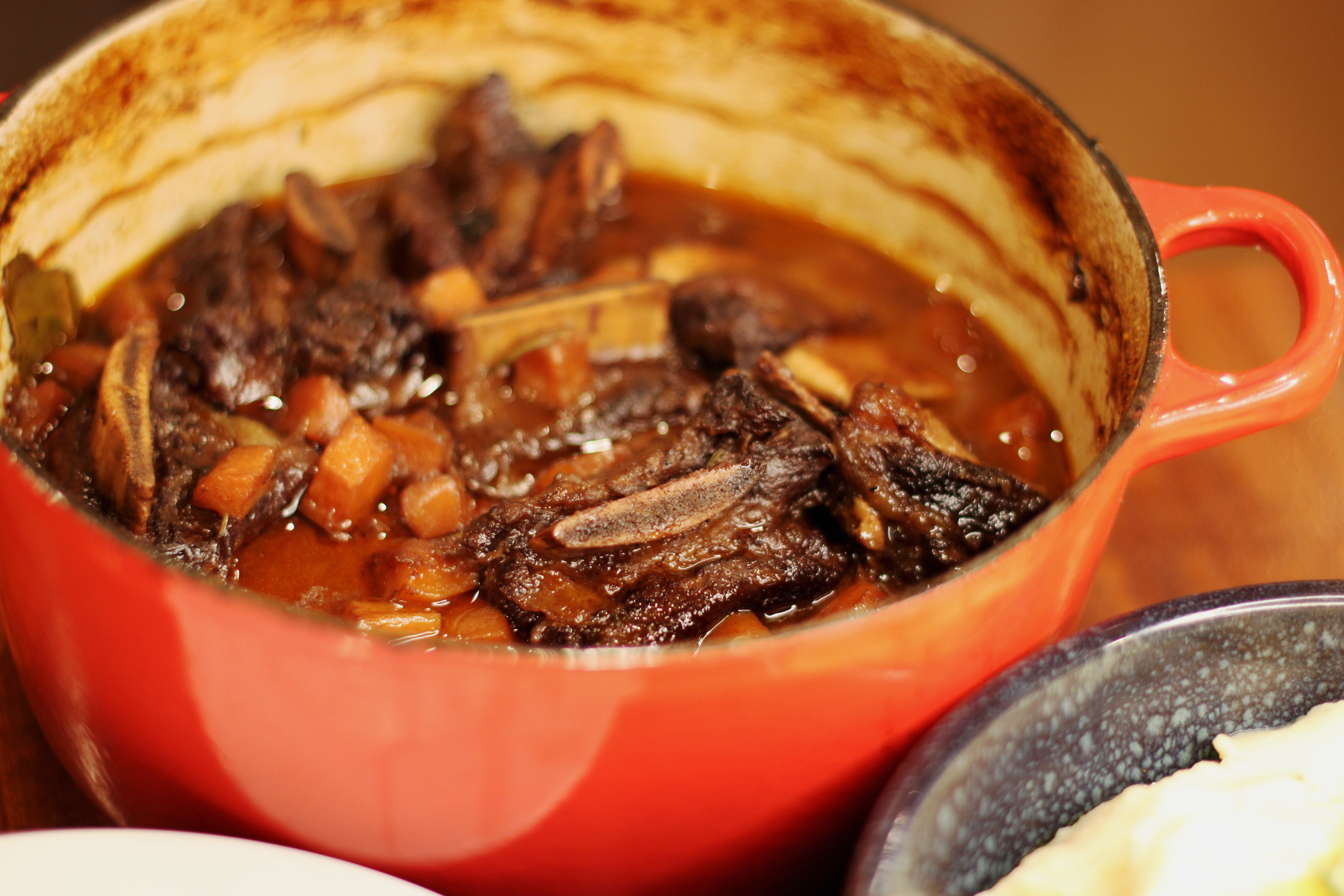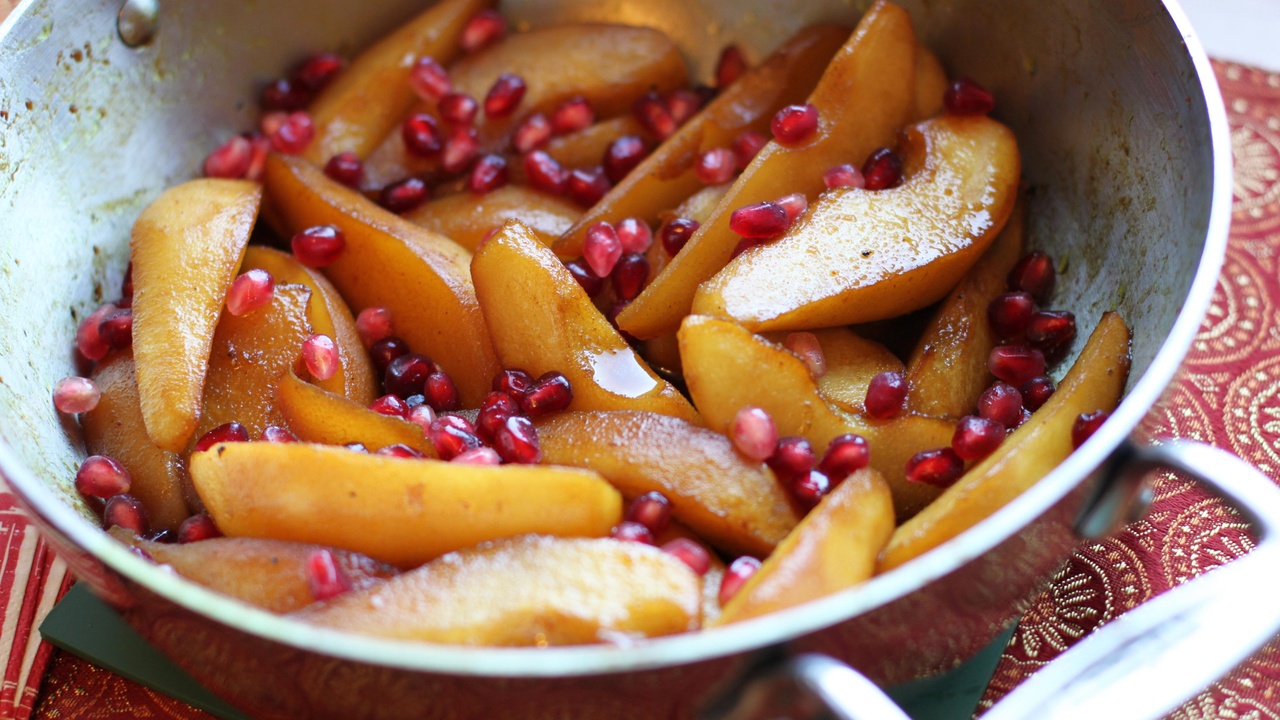Classic Braised Short Ribs

These Classic Braised Short Ribs are fork-tender and create their own rich and flavorful gravy. They also happen to be gluten-free, dairy-free, Paleo, and low-carb.
The secret to short ribs is first browning the meat and then giving them a long, slow, and low simmer in a flavorful liquid. This cooking technique is called braising, and it's the best way to turn a tough cuts like short ribs, roasts, or shanks into melt-in-your-mouth succulence.
During their long, slow braise, these short ribs bubble away in a mahogany brown sauce that is flavored with red wine, fresh herbs, lots of garlic, and the savory ribs themselves.
Cornmeal polenta is the traditional bed for braised short ribs. Here, I've served them atop a grain-free, Paleo, and AIP option of mashed cauliflower and white sweet potato. There are lots of accompaniments to choose from, depending on your current dietary requirements (see suggestions below).
This is the ultimate Sunday Dinner or weekend recipe. While it does require about 3 hours of cooking time, the active prep time is only about 30 minutes. The oven does the rest of the work for you. You won't believe the restaurant-quality result.
Full disclosure: Some of the links in this post may be affiliate links. As an Amazon Associate, I earn from qualifying purchases. Purchasing a product using one of these links will support my work at no additional cost to you. Please know that I only recommend products I wholeheartedly stand by.
What makes this recipe thyroid-healthy?
Much of what makes dishes like these Classic Braised Short Ribs both soulfully delicious and thyroid-healthy is the same stuff that makes bone broth so good, and good for us: Collagen, elastin, marrow, gelatin, and all the renderings of those mineral-rich bones and connective tissues. Not only do those elements add flavor, they also add minerals, amino acids, protein, and gut-healing goodness to the broth.
The same concept is used to create that classic French sauce, demi-glace (or demi-glaze), which is essentially meat stock (i.e., bone broth) that has been cooked down and concentrated into a flavor explosion of meaty essence. Unlike gravy, that sticky richness in demi-glace, bone broth, or these Classic Braised Short Ribs doesn't come so much from added fat or roux. It comes from the bones, meat, and connective tissues themselves. In fact, you may find that upon refrigerating the leftovers, they gel. That's the gelatin at work!
The same stuff that turns chilled bone broth to jelly also nourishes our hair, skin, and nails. It’s like spackle to the microscopic cracks in our intestinal walls (aka leaky gut or intestinal permeability), which can be prevalent in those of us with autoimmune disease. It is also the same stuff that gives back to our joints what time, age, and wear-and-tear take out of them.
The medicinal value of rich broth or stock is real and known across cultures, and there are thousands of variations. This braising technique is just one way to enjoy and benefit from that goodness by using just enough liquid to create a delicious and concentrated sauce. For this thyroid-healthy recipe, I dial up the healing factor (and flavor!) by using beef bone broth as the primary cooking liquid. If you don't want to make your own, one (16.9-ounce) box from Kettle & Fire does the trick!
On the Menu: Chicken Bone Broth
How do you thicken the broth without gluten?
There is another culinary secret to these Classic Braised Short Ribs, and that is browning the ribs before braising them. In this recipe, the ribs are seasoned and coated lightly in cassava flour before browning them on all sides.
The purpose of this is two-fold: Browning adds flavor, both on the ribs themselves and from the crust, or fond, in the bottom of the pan, which is then deglazed with red wine. It also provides a thickening agent that permeates the liquid as it simmers.
Traditionally, short ribs are dredged in all-purpose wheat flour before browning. Cassava flour is my preferred gluten and grain-free alternative for this purpose. It does a great job of thickening sauces, liquids, or gravy, without adding any noticeable flavor or gritty texture to the finished result.
If you don't tell them this is gluten-free, they won't know the difference!

What about cooking with wine? Is it thyroid-healthy?
Great question! Wine is commonly used in recipes like this one to add complexity and acidity to the finished dish. While alcohol consumption can be problematic for anyone seeking better health, is it okay to cook with it?
The short answer is probably. Cooking with wine is quite a bit different than drinking it.
Cooking, as in applying heat, evaporates much (not all) of the alcohol in recipes. How much alcohol evaporates depends on how long and how hot the food is cooked. In a recipe like these Classic Braised Short Ribs, in which the liquid is simmered for 2 to 3 hours, about 95% of the alcohol will evaporate.
In other words, even though this recipe uses 1 1/2 cups of red wine, or (2 1/2 adult servings), I feel comfortable feeding it to my young son. It neither tastes like alcohol nor results in any degree of intoxication; however, if you do not wish to consume any alcohol whatsoever, cooking with wine is off-limits. The belief that all of the alcohol is cooked off is, unfortunately, a myth.
If you wish to omit the red wine in this recipe, you can substitute an equal amount of beef bone broth plus an optional splash of balsamic or red wine vinegar for acidity.
Ultimately, whether or not wine deserves a place in your recipes depends on you and your current dietary needs and requirements. To learn more about which dietary templates allow wine and which type of wine is best, you can read my in-depth post: Cooking With Wine the Thyroid-healthy Way.
View this post on Instagram
Sourcing Thyroid Friendly Wines
There are growing concerns about the additives and toxins in many mass-produced wines, so sourcing your wines carefully is important. From the over-use of sulfites and harmful fertilizers, to the addition of flavors, colors, and even sugar to make wines stand out, additives are commonplace.
Sadly, it seems that many mainstream winemakers have turned this ancient beverage into a chemical-laden processed food. This is done as an economical shortcut for mass-producing "popular-tasting" wines.
Ironically, many sensitive consumers (myself included) have become unable to consume these wines without negative reactions like flushing, congestion, headaches, and disproportionately-sized hangovers from even minimal consumption.
These days, I enjoy carefully-sourced wines as a treat for special occasions and celebrations-- not a daily ritual. In addition to minimizing my alcohol consumption, I've struggled with adverse reactions to the additives in many commercially-produced wines. That's why I buy natural wines from Dry Farm. Their wines come from small winemakers around the globe who do things the old-fashioned way.
As a chef, I appreciate these rare and outstanding bottles. As a Thyroid Thriver, I appreciate that they are sugar-free, additive-free, lower in alcohol, lab-tested, organic, and even keto and paleo-friendly.
I've partnered with Dry Farm to be able to offer you a free bottle with your first purchase if you use this link.
Further Reading: Cooking With Wine the Thyroid-healthy Way
Thyroid-healthy Recipe Highlights
- Grass-fed (a.k.a. grass-finished) beef has a far different and superior nutrient profile than industrially raised, grain-finished beef and is highly beneficial to thyroid health. It contains up to five times more Omega-3s than conventionally raised beef, which can help reduce inflammation in the body, as well as boost immunity. It can also have more than twice the amount of Vitamin E (a powerful antioxidant), and twice as much CLA as grain-fed beef (a fatty acid associated with reducing body fat).
- Bone broth is one of the most highly recommended foods for anyone suffering from an autoimmune disease. The collagen and glycine can help repair cell damage in the intestinal tract. It also supports hair, skin, and nail health, as well as our body's detox pathways.
- Garlic has many powerful healing properties, which can aid or alleviate some of the symptoms of thyroid conditions such as inflammation, cardiovascular issues, decreased immunity, and increased infection. It can also support the liver in its detoxification efforts.
- Carrots: 1 cup of carrots contains 3.6 grams of fiber, which can help relieve constipation sometimes caused by thyroid conditions. They are also low in calories and a good choice for weight loss. 1 cup of carrots provides 428% DV of Vitamin A.

Happy cooking, happy thriving, and enjoy the recipe (below)!

P.S. If you're anything like me, when I started down the path of thyroid-healthy eating I had questions-- lots of them. What I didn't have was a step-by-step system, to get me where I wanted to go. I wasted a lot of time piecing together bits of information about what to eat, what to avoid, and HOW to make thyroid-healthy dietary changes. That’s why I created the Thyroid-healthy Meal Plan Kickstart. Ready to take YOUR healing journey farther, FASTER? Let’s do it. Learn more HERE.
Suggested Accompaniments:
- Olive oil mashed cauliflower and sweet potatoes (GF, DF, Paleo, AIP)
- The Ultimate Dairy-free Mashed Potatoes (GF, DF, Paleo)
- Cornmeal Polenta (GF, DF)
- Jovial Gluten-Free Egg Tagliatelle (GF, DF)
- Parsnip Sage Risotto (GF, DF, Paleo, AIP)
Subscribe to my free newsletter for fresh recipes & lifestyle tips, delivered weekly, and receive a free gift!
By submitting this form, you agree to receive ongoing updates from Hypothyroid Chef











